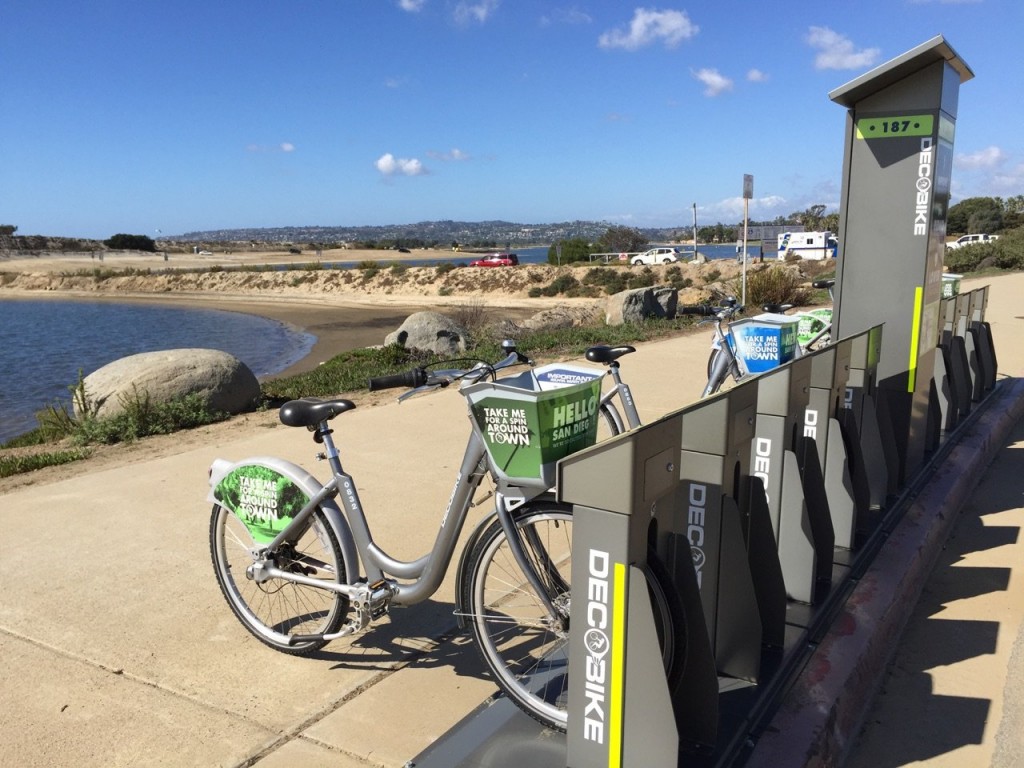What do you do if a traffic light doesn’t detect you?

We are reposting this post from 2011 because the issue is still relevant, along with some new updates.
A reader, Doug, recently asked the following question,
What does the vehicle code say about bicycles making a left turn at a light that won’t turn green. I always assumed a “safe and prudent” approach and not turn left until there is no oncoming traffic??? Though a friend was just cited for this.
A previous Lieutenant at the San Diego Police Department had responded as follows:
Concerning the citation, I cannot comment on the validity of its issuance because I was not there. If the individual believes the citation was issued in error they can contest the citation through the court process.
However, California Vehicle Code section 21450.5 (b) states essentially traffic actuated signals must be installed and maintained so as to detect lawful bicycles and motorcycles.
California Vehicle Code section 21800 (d) (1) essentially states that when signals are inoperative the vehicle (bicycle) shall stop and may proceed with caution when safe to do so.
Without knowing the particulars of the citation it appears the bicyclist must stop for the signal and then if the signal will not “trip” the bicyclist may proceed when safe to do so.
Hope the answer is clarification enough. Additionally, it is also useful to be proactive by reporting all traffic lights that don’t detect cyclists to the San Diego Streets Division via the Streets website. Reporting it via the web form also makes it easy for you to track the status of your request and follow up. Typically the requests are addressed within 24 hours, although if several thousand of you start making traffic light requests, the time to address the sensors may get longer.
When you make your request, be sure to ask that the traffic light sensors be lowered to detect bicycles and that the cycle lasts long enough for someone to ride across multiple lanes. Not everyone can dash across multiple lanes at 30-40 mph, and many bicycle riders are slow.
If you have other proactive tips or suggestions, don't hesitate to leave a comment below.
Today’s the day! San Diego Cyclists Need Your #GivingTuesday Support
This is it. It’s finally #GivingTuesday. Please take a moment to support BikeSD.
Every day that you ride your bike in San Diego, there is an organization that has your back. On every dangerous street, and in the face of every parking-obsessed politician, BikeSD is advocating for you, your safety and your happiness.
Today is our greatest chance to raise BikeSD’s budget for the next year. #GivingTuesday is a celebration of generosity where people support the causes they care about across America. Please take a moment to support BikeSD for #GivingTuesday.
I love to ride my bike, too. Four years ago, I started BikeSD because I knew in my heart that San Diego could be a better place to ride a bike. Our streets can be less frightening, more safer, full of more cyclists. Together, you and I can get there. Thank you for your support.
Samantha Ollinger
Executive Director
P.S. Please take a moment to support BikeSD for #GivingTuesday. It’s the most important fundraising event of the year for San Diego cyclists, and you’re a critical part of whether or not today is a success.
Who Bikes San Diego and Why
I was curious about the sort of riders I sometimes see when I’m out and about and I wanted to learn more about them. So a few Fridays ago, I decided to chat up a few riders in San Diego for our blog. I didn’t know what to expect or who I would encounter nor, nor if the riders would even talk to me.
While riding downtown I steered clear from two pretty most common types of bicycle riders, the tourists and spandex wearing road riders. The reason was because I, for the most part, already know why they are riding (I wear spandex myself). But bicycling is still misunderstood by many people including those who ride themselves. Many times when I tell people I ride conjures up an image like this:

While I personally have a tremendous amount of respect for professional cycling, the sport itself doesn't do much to make our streets safer. Furthermore, it's an exhausting tiresome stereotype that just will not die. In America we tend to relate biking to either a voluntary choice or a fitness activity. Thus, we miss bicycling’s main benefit which is transportation not to mention healthy and more vibrant and livable communities. So a few Fridays ago, I wanted to chat up some San Diegan bicycle commuters and learn what they had to say and what they wanted to see in San Diego. Below is a short summary of the conversations I had with three San Diegans riders a few Fridays ago. Responses have been slightly edited to read clearly.
*Spoiler alert*: All the riders I spoke with wanted bicycle infrastructure
First rider: Jose
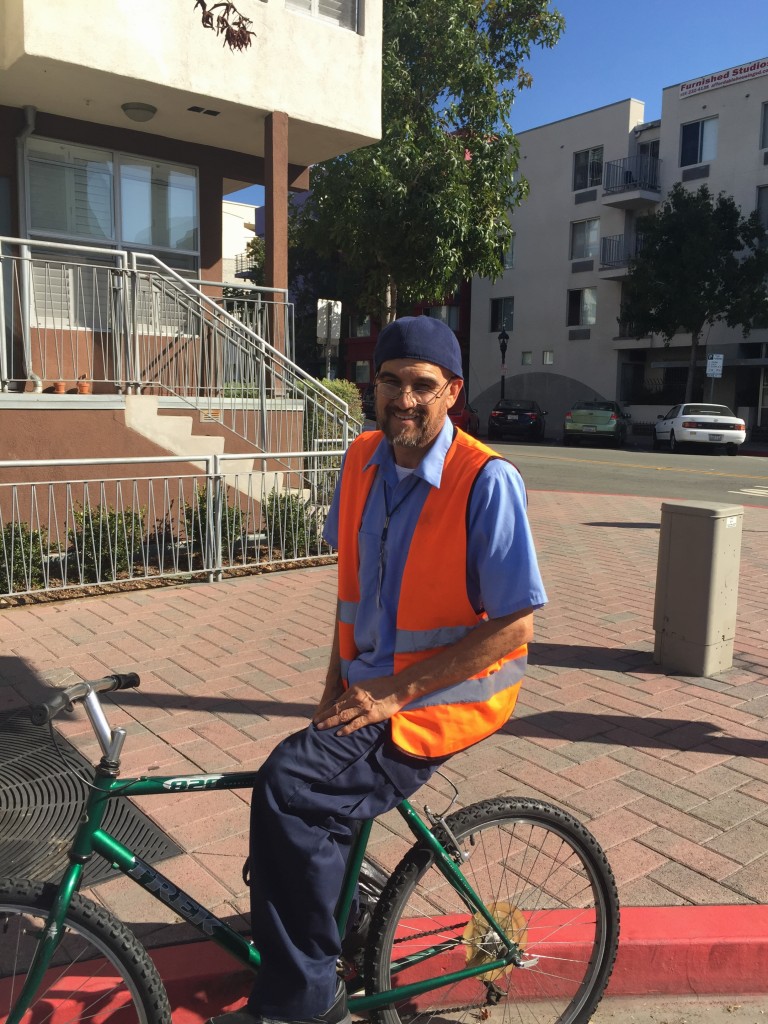
BikeSD: How long have you been commuting by bike?
Jose. I have been riding a bicycle to work for two years.
BikeSD: Why do you ride in San Diego?
Jose: I ride to get to work, 5 days a week.
BikeSD: What neighborhood do you commute from?
Jose: San Ysidro
BikeSD: What are the best and worst parts of commuting by bicycle in San Diego?
Jose: Worst would be on Fridays when people on Island Avenue drink beer and throw their trash on the street. Additionally, the drivers come way too close and don't pay attention...they don't stop. Things I enjoy about riding include that riding healthy for myself and saves me money since it's expensive to park downtown. I would like more bike lanes though.
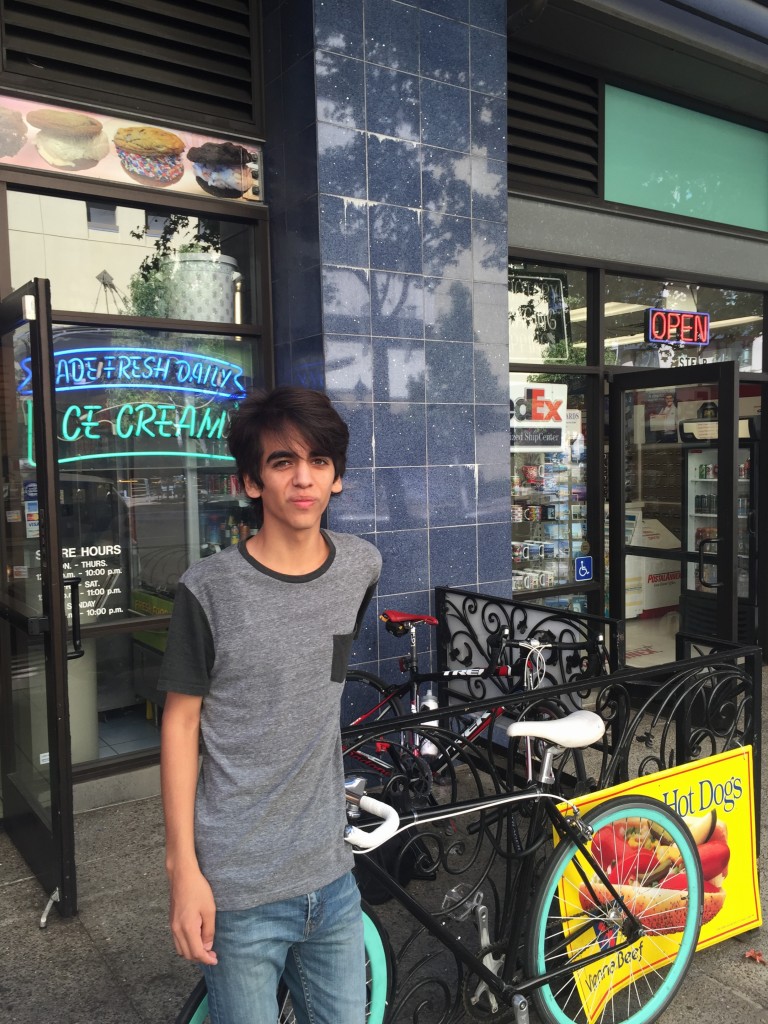
Second rider: Carlos
BikeSD: Carlos, how long have you been commuting by bicycle?
Carlos: around 7 months
BikeSD: Why do you ride in San Diego?
Carlos: Well, it beats traffic most of the time. I get some exercise here and there. Also, parking is really bad downtown.
BikeSD: What neighborhood do you commute from?
Carlos: Encanto
BikeSD: What are the best and worst parts of commuting by bicycle in San Diego?
Carlos: The best parts includes getting to meet some really nice people biking. I like the open air and I get to go to really nice places. The things I would change would be more bike lanes/routes. I almost got ran over about 2 weeks ago...drivers ignore you sometimes.

Third rider: Delia
BikeSD: How long have you been commuting by bike?
Delia: For about a year, three times a week.
BikeSD: Why do you ride in San Diego?
Delia: It's faster than the bus!
BikeSD: What neighborhood do you commute from?
Delia: Spring Valley
BikeSD: What are the best and worst parts of commuting by bicycle in San Diego?
Delia: the best part would be that you feel really free on your bike. The worse part would be the fact that many roads don't have a bike lane or even a shoulder, so you feel uncomfortable.
BikeSD: How long have you been commuting by bike?
Joe: I have been using my bike to get around for about 20 years.
BikeSD: Why do you ride in San Diego?
Joe: I choose for financial reasons, it's healthier and gets me the closest parking.
BikeSD: What neighborhood do you live in?
Joe: East village
BikeSD: What are the best and worst parts of commuting by bicycle in San Diego?
Joe: The best things lots of bike paths and lanes. Some of the bad things are people not paying attention to the bikers. Drivers getting too close...when you talk to people about their bad habits they escalate it, it just becomes a pain in the butt. They cars are bigger than I am, but if you're in that much of a rush...you go ahead.
-----
After talking with this diverse group of bicycle commuters one thing was certainly clear. bicycle riders do not feel safe on the streets of San Diego currently. At BikeSD we cannot build the bike lanes or push for appropriate enforcement in order to get to a culture shift.
What we can however do is keep up the pressure on local officials to do so
How Can BikeSD Make a Dent in Income Inequality? Through Advocacy and Embracing Equity
This is a bit of a philosophical post and thus a little lengthy. I’ll be happy to expand on this post in subsequent posts if you want me to. Just leave a comment or send me an email.
Last year, Councilmember David Alvarez appointed me to represent his council district, District 8, at the city’s Bicycle Advisory Committee. It was an incredible honor and a challenge, because I live in Council District 9, not 8. In an attempt to understand the district, the needs of the community, and the challenges I would be dealing with, I met with one of Alvarez’s staffers for coffee one morning. At the meeting, the staffer told me, in no uncertain terms, that bike infrastructure was not necessarily a priority for the district. I was a bit blindsided and it has taken me almost an entire year to understand what she meant when she gave me the low-down on District 8. This post is an attempt to explain that understanding.
First, here is a little personal history, which is relevant for this story. I am an immigrant, brown-skinned woman who co-founded a bike advocacy organization in San Diego. For those of you whose first contact with bike advocacy is BikeSD, you may not find anything unusual about that. However, nationally, the bike advocacy movement is struggling with trying to broaden its scope both within its leadership and within its advocacy focus. Historically, the bike advocacy movement has been dominated by men, often middle-aged, and almost always white, sometimes even with racist historical baggage that is hard to dispose. There is nothing inherently insidious with the movement’s historical representation in and of itself, both because of historical realities and also because of how the oil and the automobile industries have dominated the American life experience and culture. So, standing up for something that has never benefited from either policy or funding priorities outside of a curious interest or the focus of childhood play almost seems bizarre. But, bicycling isn’t just a hobby. It is a very simple solution for many complex problems.
Solving problems that are complex and varied with many underlying root causes cannot be addressed by any one single or ethnic group.
Policy wins, in a period of scarce resources and strange media rhetoric in a crowded field of numerous competing priorities, can be extremely challenging. How can one expect the basic amount of respect for a cause when jokes about killing your constituency is both commonplace and tolerated?

Around the time BikeSD was founded in 2012, many advocacy organizations began to realize the huge missing representation within their own respective organizations. Women were rare birds in bike advocacy leadership. There was also a glaring omission of any ethnic or racial minority group at the top levels (and often even at the staff levels) of bike advocacy organizations. So not only was BikeSD founded with the intention of changing San Diego’s culture that was centered around the automobile, but the organization was created to also push the envelope of what it meant to be part of an organization that focused on equality of sexes and was inclusive and fearless in challenging the status quo. We wanted the organization to be a public platform for every voiceless resident. My vision, that my board, advisors, and supporters have bought into, was to create a city where it was not just white guys in spandex riding around in circles at the Velodrome. Instead, we would work together to create a city where our differences, while external, could be celebrated and become learned experiences for everyone. We envisioned a city where our streets could be public gathering spaces where we could share ideas, converse, and enjoy, while moving through it comfortably and safely. We wanted BikeSD to be a platform to address historically broken promises by being an organization that would be willing to stand up to and challenge the status quo.
Bike infrastructure isn’t important.
This may sound strange or even seem like a heretical statement to be making on behalf of an organization whose entire mission is ostensibly to advocate for bike infrastructure. However, our organizational focus on equity should provide a hint to the deeper meaning and purpose of our existence. This doesn’t mean that we want everyone to “share the road” with multi-ton vehicles on 45mph roads by riding on sharrows. But, bike infrastructure also cannot be the only solution that we advocate for to the detriment of the lives and dignity of communities and neighbors that have always been forgotten.
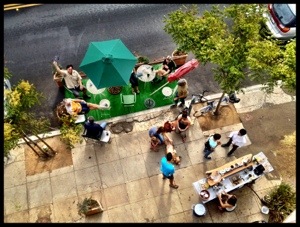
Infrastructure, in its bluntest terms, means funding. Money. Dinero. Cold hard cash. So by advocating for bike infrastructure, we are advocating for reallocating funding, away from driving and away from design features that isolate, harm, and kill us—both metaphorically and literally. Are parking lots, with hundreds of parked cars, thriving centers where great minds congregate to solve problems and innovate? On the other hand, how many ideas have been hatched on group rides, on solo rides, in coffee shops, or at the local parklet? By advocating to reallocate funding we want to work to connect communities and create people-centric havens that not only make bicycling safer, but also make our cities more livable and humane. We envision a city where walking is less stressful and driving is less dangerous. Bike infrastructure is the clarion in the coalmine for a better life. But more importantly, reallocating funding allows everyone to partake in the riches that our society has for too long failed to deliver to our most marginalized and neglected communities.
Understanding why bike infrastructure doesn't matter (as much) in underserved communities
So back to that coffee meeting with the Alvarez staffer. Barrio Logan is a community in District 8. Last year, the community suffered a devastating defeat when business interests lobbied to crush and destroy a community supported Community Plan that would have given the residents the very basic dignity of not having to live alongside toxic industries. This is a community where residents have to regularly deal with toxic dumping that affects not only the quality of life, but their very existence. This is in addition to living alongside a gigantic bridge that serves as a daily visual reminder of the sheer callousness of how little policy makers think of their community. In this reality, where exactly do bike lanes (protected or painted) belong in the list of community priorities?
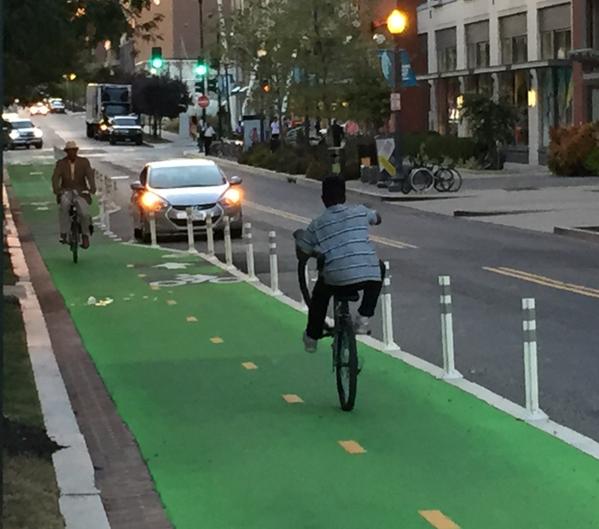
Earlier this week, our City Council unanimously supported a council resolution to adopt a Vision Zero resolution—a commitment of sorts to work on reducing all traffic fatalities to zero within the next decade. While a post on that is forthcoming, addressing Vision Zero appropriately also includes a focus on addressing equity. I live in City Heights where cases of police overreach have been documented, as it has been elsewhere. So amongst the six E’s, is Enforcement an appropriate solution to making sure Vision Zero is a success? Granted, not everyone within law enforcement are untrustworthy and bad people, but when community interactions with law enforcement has only resulted in the breakdown of trust, it is possible that enforcement of minor roadside infractions may not be the most judicious use of our valuable public dollars. Is penalizing jaywalking the appropriate solution if a jaywalker was killed previously? Or would a road diet, alongside speed reductions and the creation of a mid-block crossing, be a better solution?
Invisible Cyclists
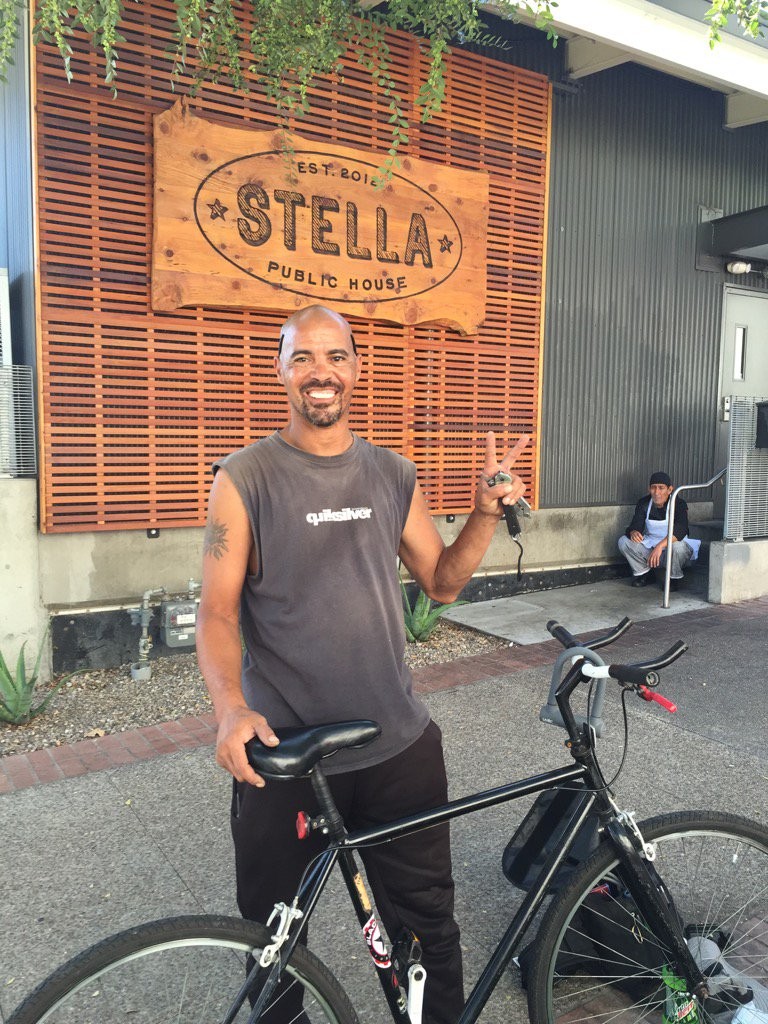
A group of riders that exists in every community but remains hidden are invisible cyclists. They are your local service workers: the cashier at your fast food restaurant, your janitor, and even the friendly homeless panhandler who straddles the median on Balboa Avenue. These people don’t have a choice and use a bicycle as the most cost effective way of getting around, just like I did many years ago when I was working five jobs and trying my best to get through college (an endeavor that took nearly a decade to accomplish). Bike lanes don’t feature into their reality and it didn’t for me either when I was struggling to make rent and get an education. And, neither do community meetings where uneducated rubes selfishly fight against any sane solution that would make our streets safe for every person.
So does that mean bike lanes are bad or unwanted? Absolutely not. But in a community where people would like to live in homes free of mold and cockroaches, bike lanes aren’t on a top priority list, especially if they generally allude to an even more unattainable and pricier life. This disconnect has been studied and documented by a friend and researcher, Dr. Adonio Lugo, some of which was expanded upon in a recent Governing article.
What's Next?
The elephant in San Diego’s living room remains the automobile. The relentless quest to prioritize and elevate the automobile’s dominance has destroyed many San Diego neighborhoods, as well as, killed and injured countless lives. There is a way out and the only way forward is to move away from the automobile. But, to do that, we need everyone on board. Changing a culture isn’t easy, but neither is witnessing growing societal disparities where our own friends, neighbors, and service workers are denied a voice at the table of public resources.
So remember that while bike infrastructure is a solution, and a valuable one at that, sometimes it’s not a priority for other more pressing needs. The challenge is to dissect and understand the real concerns that cause greater disparity from ones that don’t. Stay tuned for more on this subject.
This was a long post to delve into. In future blog posts this post will be expanded to include topics such as:
What are some things that other bike advocacy organizations have done to help bridge the gap?
What exactly are some of the things BikeSD plans to do?
What can I, as a volunteer do to help bridge the gap?
----
Stay tuned for how we, with your help, intend to address those questions. In the meantime, hope the post above gave you something to think about and be motivated enough to get involved more meaningfully as we expand and strenghten on the work that you have signed on to support. We are a non-profit organization, so your financial support today does help make for a better San Diego tomorrow.
CityBeat's Best of San Diego: A Bike Ride from North Park to Fiesta Island
CityBeat's Best of 2015 issue is out today and Ryan Bradford gave us at shout-out! The piece starts as follows:
San Diego isn't always kind to cyclists. While bicycling advocacy within the city has strengthened—due, in large part, to the tireless work of BikeSD and progressive city government—we still have some ways to go before it becomes a city for bikers. Ill-maintained surface roads are hell on street tires, motorists still don't know how to share the road, and local media—even progressive media—has a tendency to vilify bikers as scofflaws (not to mention victim-blame: take note of any report on a bike-car collision that mentions the biker not wearing a helmet).
Thanks for the kind words, Ryan! Pick up your copy of Citybeat today and check it out!

